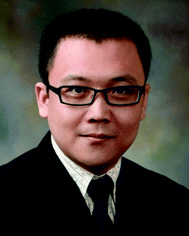Nanobiointerfaces: a themed collection
Edmondo M.
Benetti
 a,
Marcus
Textor
a,
Marcus
Textor
 b and
Hongwei
Duan
c
b and
Hongwei
Duan
c
aPolymer Surfaces Group Laboratory for Surface Science and Technology Department of Materials ETH Zürich, Zürich, Switzerland. E-mail: edmondo.benetti@mat.ethz.ch
bLaboratory for Surface Science and Technology, Department of Materials, ETH Zürich, CH-8093 Zürich, Switzerland. E-mail: marcus.textor@mat.ethz.ch
cSchool of Chemical and Biomedical Engineering, College of Engineering, Nanyang Technological University, Singapore. E-mail: hduan@ntu.edu.sg
Within this field, nanoscale physicochemical and biomolecular interactions at the interface between synthetic formulations and biological media have been increasingly recognized to play a pivotal role in determining the performance of biomaterials, medical devices, biosensors and drug delivery systems.
The term “nanobiointerfaces” stands for more than a simple classification in technical terms. It is a rapidly developing, distinctively interdisciplinary field where joint efforts from physicists, chemists, biologists and engineers have contributed to a reinterpretation of the design of materials through the relevant lenghtscales of biological systems. This general approach has led to the chemical and physical nanostructuring of organic and inorganic substrates, to trigger biological responses at the interface, such as the regulation of cell adhesion and differentiation, or the prevention of surface colonization by bacteria.
Moreover, exquisite control over interfacial composition, size and physicochemical properties of nanoparticles (NPs) hold promise to increase the specificity and efficacy of therapeutics, providing a variety of new platforms for drug delivery and bioimaging systems.
In this themed collection, we focus on a selection of biomaterials’ designs and applications, as particularly relevant examples of structured nanobiointerfaces.
These include graphene nanostructures, featuring unique physicochemical properties that enabled their application as antimicrobial materials and components for biosensors.
The development of inorganic NPs and their diverse applications in biotechnology are further reviewed, highlighting how sophisticated surface modification protocols have determined their biocompatibility for in vivo applications.
A collection of recent advances in the design of drug delivery systems is additionally included in this themed collection, providing relevant examples of how the precise molecular structuring of nanotherapeutics is paving the way for the next generation of drugs.
Finally, some relevant examples of surface engineering to yield micro-/nanostructured, bio-responsive interfaces are reported. In these works, the adhesion and development of different cell lines is shown to be regulated by surface topography, and actively influenced by the presence of bioactive species released at the interface.
Thus, the aim of this special collection is to bring together an ensemble of leading experts working in the development of hybrid nanomaterials not found in nature, but including approaches that mimic structural features found in nature, which can develop and adapt according to their environment.
While excellent scientific and engineering progresses have been made in the synthesis, characterization and in vitro evaluation of nanobiosystems, very few developments have been successful in the translation to application, e.g. in clinics and industry. On the one hand, this certainly has to do with the general complexity of nanobiosystems and their target specifications. On the other hand, most studies lack an early translational approach where from the very beginning, both the scientific aspects, technical application requirements and regulatory issues are taken into account. Chances of success in clinics and the market depend not only on a broad interdisciplinary approach in R&D, but, equally important, on close partnerships and collaborations along the translational value chain.
ETH Zürich, Switzerland
ETH Zürich, Switzerland
Nanyang Technological University, Singapore
| This journal is © The Royal Society of Chemistry 2018 |



